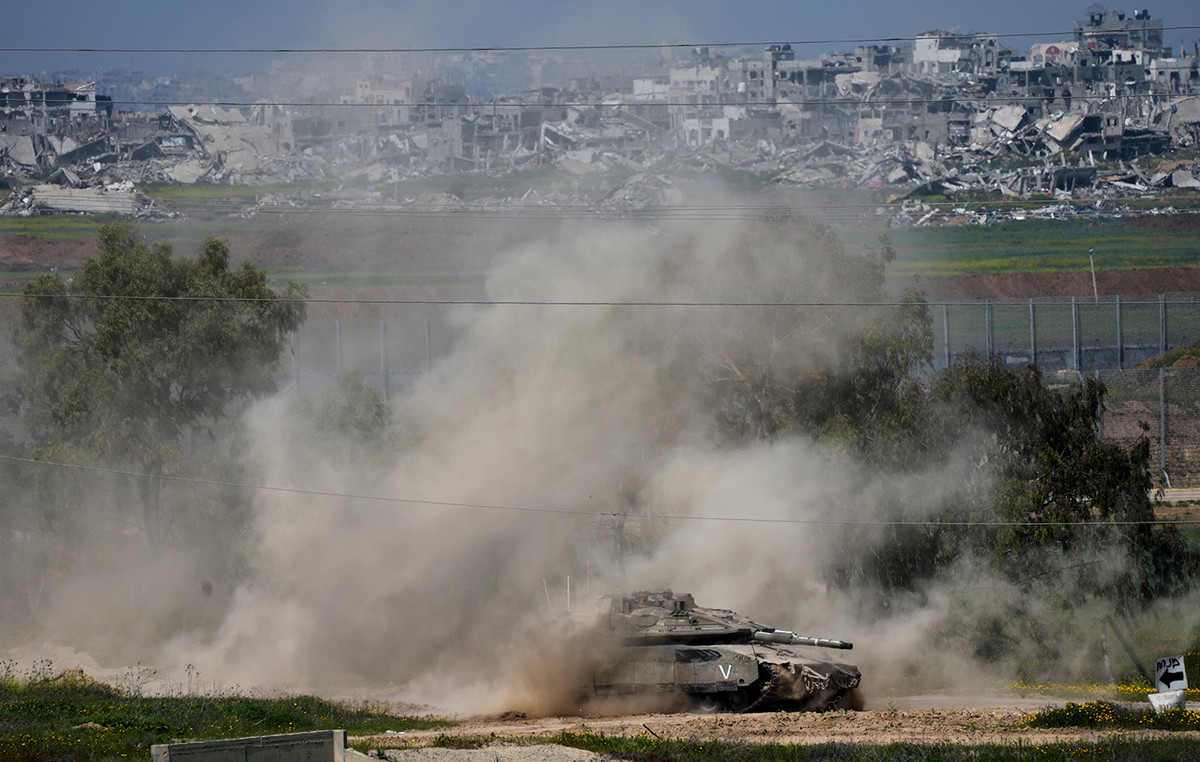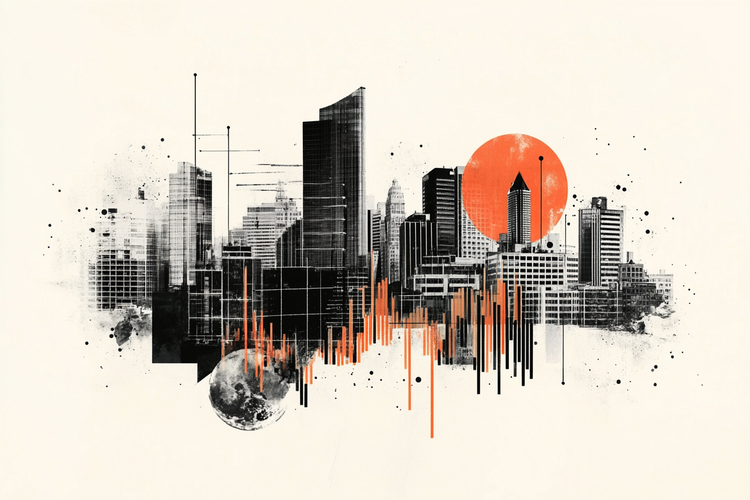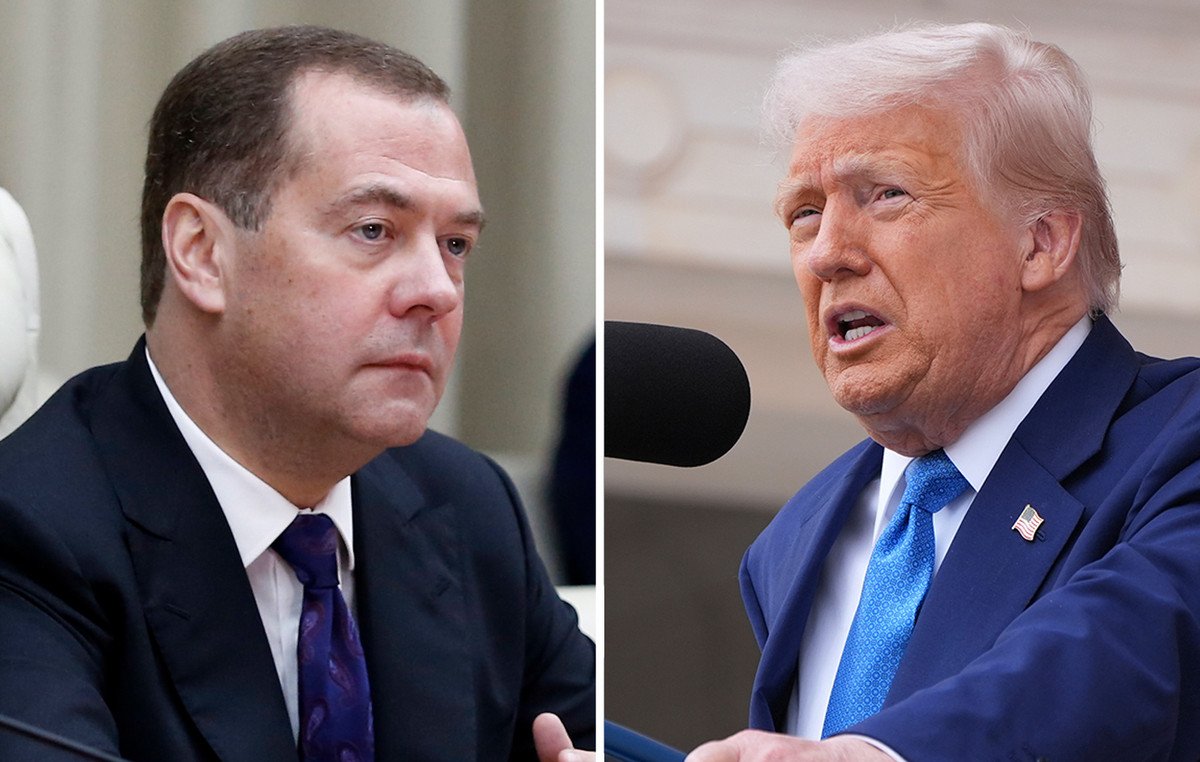O Ibovespa closed down 0.22%, at 119,999.23 points, this Thursday (31), in a day of volatility with slight positive and negative variations in the last monthly and quarterly session. Stocks more vulnerable to price increases fees rose due to the fall in future yield curves (DIs), with slight relief from concerns about inflation.
On the other hand, the greater aversion to risks abroad weighed negatively, with stock markets in the United States and Europe retreatingand the fall of papers linked to the commoditiesespecially to oil, with the Brent type recording a drop of 4.88% in this session, due to the release of North American stocks and the announcement by OPEC+ of an increase in the rhythm of production.
already the dollar fell 0.47%, ending at R$4,762, the lowest value since March 2020, with the real maintaining a flow of investments supported by Brazil’s high interest rates, assets considered discounted on the stock exchange and the search for commodity-producing countries, whose prices shot with the war in ukraine.
The fall occurred despite the positive performance of the dollar abroad, with the market reinforcing risk aversion and pessimism regarding negotiations between Ukraine and Russia, with no concrete signs of progress. A measure of inflation in the United States, a benchmark for Federal Reserve he came in line with expectationswith no surprises for the market.
Thanks to the favorable flow to the real, the US currency accumulated a devaluation of 7.63% in March and 14.55% in the first quarter of this year, the highest since 2009. The Ibovespa, on the other hand, rose about 6% in March, the fourth straight month of gains, and 14% in the first quarter, the best since 2020.
The market has also been attentive to a possible readjustment of 5% for civil servantswhich would represent more spending by the government and raise fears of a fiscal lack of control, a scenario that would favor the dollar.
On Wednesday (30), the dollar rose 0.59%, closing at R$ 4.785. The Ibovespa rose 0.2%, reaching 120,259.76 points, the highest level since August 27, 2021.
Petroleum
Since the invasion of Ukraine by Russia on the 24th of February, the markets for Petroleum show the highest volatility in two years, with commodity prices reaching levels last seen in 2008.
The commodity has fluctuated in the range of US$ 100 and US$ 110 in recent days. On the one hand, the market expects lower demand due to new lockdowns in china and the prospect of a Longer interest rate hike in the United Stateswhich would slow down the country’s economy.
At the same time, any news about the war influences prices, feeding or reducing fears of supply problems and affecting prices.
However, compared to previous years, oil remains at high values and rose more than 30% in the first quarter, due to the mismatch between supply and demand for the commodity, with the main producers, gathered in the OPEC+, not yet resuming pre-pandemic production levels. The picture was intensified with the tensions in europe.
commodities
The surge in commodities with the conflict in Eastern Europe favors the Brazilian market, and its effects have helped to overcome risk aversion with the war in Ukraine, which has benefited the real so far.
The cycle is linked, in part, to the rise in oil and iron ore due to high demand amid the economic recovery. O interest rate hike in the US also feeds this migration, with the exit of the North American variable income.
Another factor behind this movement is expectations of more pro-growth measures in the China that are raising hopes of a recovery in demand for metals, which has led to higher prices, reinforced by the crisis in Ukraine.
However, Chinese government interventions in the market and a new outbreak of Covid-19 in the country with lockdowns, they still generate downward pressures, in an up and down in the price, which remains at high levels.
War in Ukraine
Follow CNN’s live coverage of the conflict.
With the war in Ukraine completing a month, Ukrainian forces have been trying to reclaim territory from the Russians in recent daysaccording to a senior US defense official—who described them as “able and willing” to do so.
Russia and Ukraine held a new round of talks on Tuesday in Turkey, with a Russian pledge to reduce military activity in the capital, Kiev, and in Chernihiv. The Ukrainian president signaled that the country would accept a neutrality statusa Russian demand, but no territorial concessions.
Although Russia has promised toreduce attacks in Ukraine, bombings have resumed in Chernihiv, in the north, as stated by the local mayor Vladyslav Atroshenko.
So far, Ukraine and Russia have sat at the table for a few rounds of negotiations. There was an attempt to open corridors for the removal of the population and the arrival of humanitarian aid.
From an economic point of view, the sanctions with the greatest economic impact on Russia are linked to the expulsion of Russian banks from Swifta global means of payment processing.
Test your knowledge about the Ibovespa
Let’s start with an easy one: what is the Ibovespa?
Who is responsible for calculating the Ibovespa?
What types of assets are eligible to be listed on the Ibovespa?
Which of these is NOT a criterion for a stock to enter the Ibovespa
How many shares are currently in the Ibovespa theoretical portfolio?
How often is the Ibovespa theoretical portfolio reviewed?
What is the most important stock on the Ibovespa?
What is the smallest share on the Ibovespa?
Each Ibovespa point is equivalent to 1 real. This statement is
What is the historical record for closing the Ibovespa?
Try again!
Tip: follow CNN Business to understand more about Ibovespa
Nice job!
You know a lot about the Ibovespa, but you could know a little more
Sensational!
Congratulations! Are you an Ibovespa expert?
*With information from Reuters
Source: CNN Brasil
I am Sophia william, author of World Stock Market. I have a degree in journalism from the University of Missouri and I have worked as a reporter for several news websites. I have a passion for writing and informing people about the latest news and events happening in the world. I strive to be accurate and unbiased in my reporting, and I hope to provide readers with valuable information that they can use to make informed decisions.





